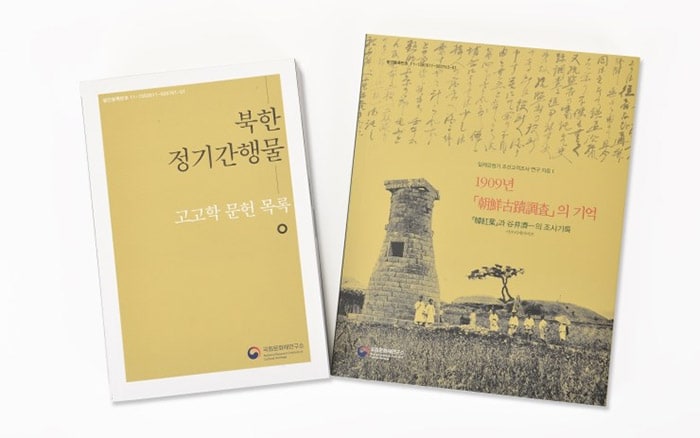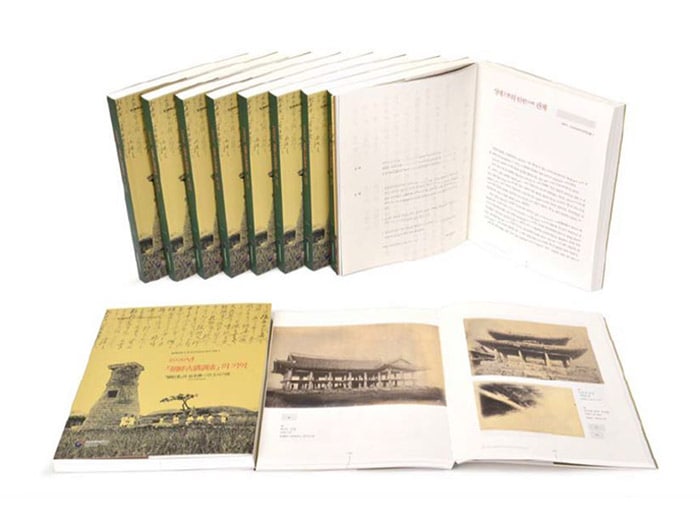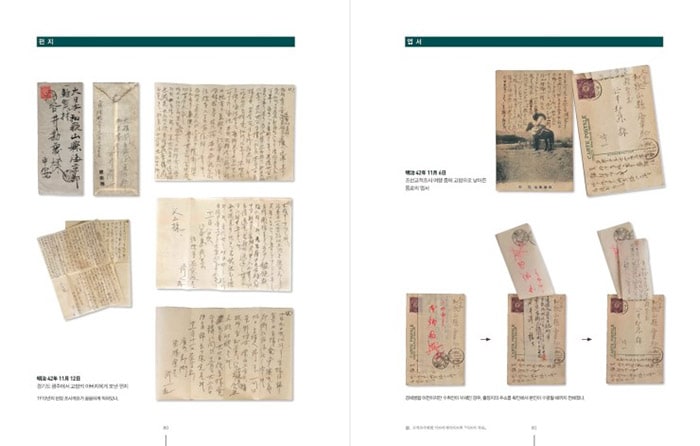
On Jan. 5, the National Research Institute of Cultural Heritage publishes a catalogue of North Korean publications on archeological research (left) (북한 정기간행물 고고학 문헌 목록) and a compilation of research into Joseon historical sites that was conducted in 1909 (1909년 조선고적조사(朝鮮古蹟調査)의 기억).
Two books on the cultural heritage of Korea were released by the National Research Institute of Cultural Heritage on Jan. 5.
“Memories From Research Into Joseon Historical Sites in 1909” (1909년 조선고적조사의 기억) is a compilation of research materials collected in 1909, right before the formal start of colonialism in 1910. The other book is a catalogue of North Korean papers on archeological research (북한 정기간행물 고고학 문헌 목록) taken from a number of academic publications.


‘Memories From Research Into Joseon Historical Sites in 1909’ (1909년 조선고적조사의 기억) is a compilation of findings on Korean cultural heritage sites collected by a team of Japanese scholars in 1909, right before the formal start of colonialism. Copies of letters, postcards, photographs and research notes left by one of the team members, Yatsui Seiichi, have been included in the book.
“Memories From Research Into Joseon Historical Sites in 1909” was originally put together by Tokyo University’s Professor Sekino Tadasi and two research assistants, Yatsui Seiichi and Kuriyama Jyunichi. Their research, conducted over four months from September to December 1909, put together findings on Korean cultural heritage sites found in major cities like Gaeseong, Pyeongyang, Seoul, Gongju, Gyeongju, Yangsan and Busan.
To this body of research, Yeungnam University’s Professor Jung In-Seung added 145 pages that include copies of letters, postcards, photographs, and research notes left by Yatsuii Seichii, one of the research assistants. Comparisons were made between the photos provided by Yatsuii with photographic records on dry plates kept at the National Museum of Korea, to publish a comprehensive study on cultural heritage sites and artifacts, folk traditions, and the natural environment.
“Hanhongyeop” (한홍엽, 韓紅葉, カラモミジ), a book that Professor Sekino and his team published on Nov. 23, 1909, in Seoul, was the culmination of their research and is herein translated into Korean for the first time, along with some 72 photographs.
“Even though the research conducted by the Japanese in 1909 was the beginning of our inquiry into Korean cultural heritage, we haven’t paid attention to its findings until now,” said Professor Jung. “The aim of this new publication is to make readers reflect on the studies conducted in 1909, and to transfer those memories into the Korean conscience.”

A catalogue of North Korean papers on archeological research (북한 정기간행물 고고학 문헌 목록) lists some 4,300 academic papers from eight different publications covering research into archeology and cultural heritage.
A second book on Korean cultural heritage has also recently been published. A catalogue of North Korean papers on archeological research lists some 4,300 academic papers from eight different publications covering research into cultural heritage, cultural artifacts, ancient folklore, Joseon’s antiquities, ethnic heritage, historical inquiry, historical science and Joseon architecture. The papers are organized by publication date and number.
The two books will soon be made available for browsing at the National Research Institute of Cultural Heritage website (www.nrich.go.kr).
By Lee Hana
Korea.net Staff Writer
Photos: National Research Institute of Cultural Heritage
hlee10@korea.kr






![[102nd March First Independence Movement Day] American journalist’s Seoul home to be opened to public](https://gangnam.com/file/2021/03/usr_1614255694426-218x150.jpg)
















